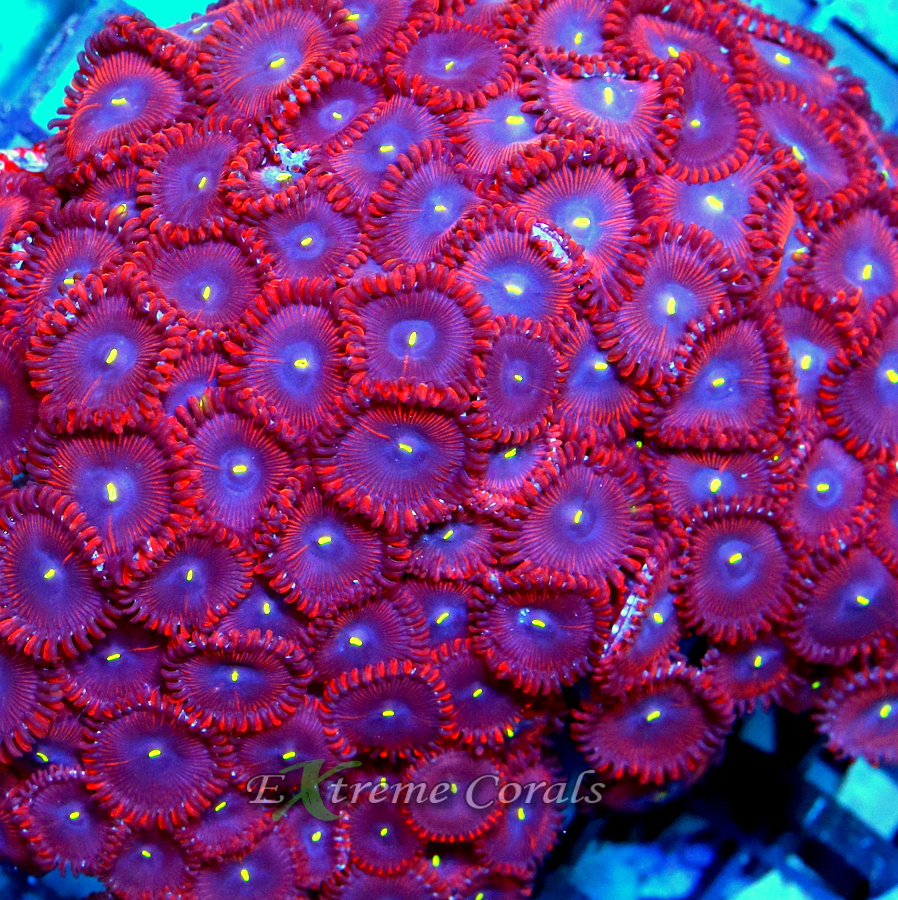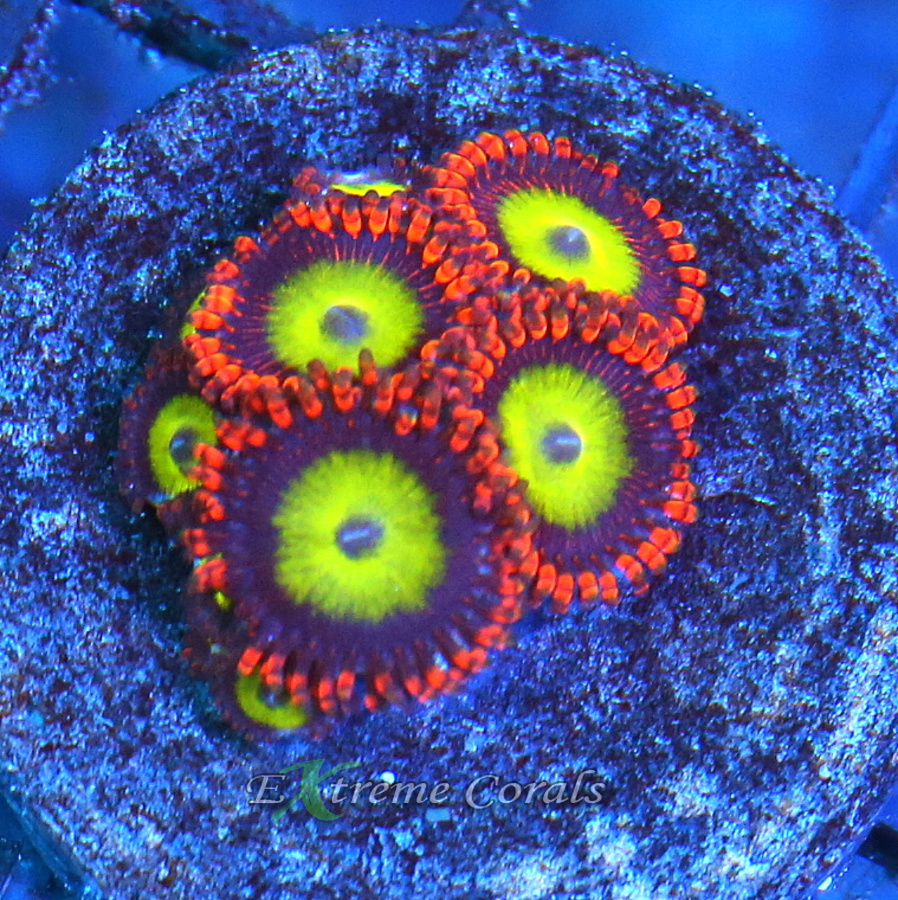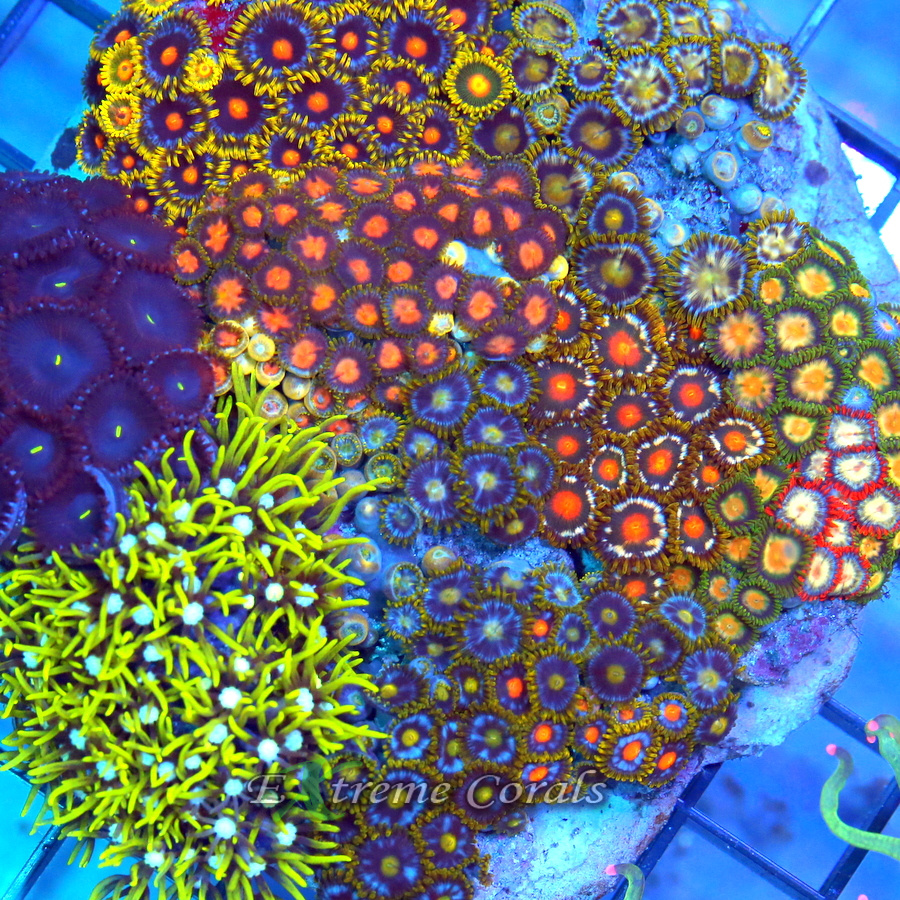Extreme Corals News and Updates
Fragging Zoanthids and Palythoas technique, equipment and method. Be extremely careful when doing this
Learn the art of fragging Zoanthids and Palythoas to enrich your reef tank with vibrant hues and sustainable growth
Discover expert techniques for fragging Zoanthids and Palythoas, ensuring vibrant reef tank colors while safeguarding coral health.
by scott Shiles • June 22, 2023
Zoanthids and palythoas are among the most coveted and vibrant coral species that can transform a reef tank into a kaleidoscope of colors and textures. These corals, prized for their stunning appearance and relative ease of care, have captivated aquarists worldwide. Fragging, or fragmenting, these corals offers enthusiasts the opportunity to propagate their collections, promote coral growth, and share their passion with others. However, fragging requires careful consideration of techniques, equipment, and post-fragging care to ensure the well-being of the corals and the overall health of the tank. In this comprehensive guide, we will delve into the best practices for fragging zoanthids and palythoas, empowering aquarists to undertake this rewarding endeavor with confidence and success.

Understanding Zoanthids and Palythoas:
Zoanthids and palythoas belong to the order Zoantharia, commonly known as zoanthids or button polyps. These corals are characterized by their polyps, which are small, cylindrical structures adorned with tentacles that capture prey and provide a source of nutrition through photosynthesis. Zoanthids and palythoas exhibit a remarkable diversity of colors, ranging from vibrant oranges and yellows to rich blues and greens, making them prized additions to reef tanks.
One of the appealing aspects of zoanthids and palythoas is their ability to thrive in a variety of tank conditions, including varying lighting and water flow. This adaptability, coupled with their striking appearance, has cemented their popularity among both novice and experienced aquarists.
The Importance of Fragging:
Fragging serves as a vital technique for coral propagation and expansion within the reef aquarium hobby. By fragmenting healthy colonies of zoanthids and palythoas, enthusiasts can create new colonies, share specimens with fellow hobbyists, and rejuvenate existing displays. Additionally, fragging promotes coral growth by stimulating the formation of new polyps and enhancing overall colony health.
While fragging offers numerous benefits, it is essential to approach the process with caution and care to minimize stress and ensure the successful establishment of the frags. Proper technique, appropriate equipment, and diligent post-fragging care are paramount to achieving desirable outcomes.
Preparation and Equipment:
Before initiating the fragging process, it is crucial to gather the necessary equipment and prepare a suitable work area. Essential equipment includes safety gloves to protect against potential toxins secreted by the corals, safety goggles to shield the eyes from debris, and fragging tools such as sharp scissors or razor blades for precise cuts. Frag plugs or tiles provide a stable base for attaching the coral frags, while coral epoxy or glue facilitates secure adhesion.
Selecting healthy colonies for fragging is fundamental to the success of the process. Healthy colonies exhibit vigorous growth, vibrant colors, and are free from pests or diseases. Fragging unhealthy or stressed corals can lead to complications and may compromise the well-being of the parent colony.
Creating a clean and organized work area near the aquarium, preferably with ample lighting, minimizes the risk of introducing contaminants that could harm the corals. Maintaining a sterile environment is essential to prevent infections and promote the successful healing of the frags.
Fragging Techniques:
Several fragging techniques can be employed for zoanthids and palythoas, each offering unique advantages depending on the size and structure of the colonies.
1. Cutting: Cutting involves gently separating the coral colony into multiple frags using sharp scissors or a razor blade. Careful attention should be paid to ensure each frag contains a portion of healthy tissue and several polyps. Clean cuts minimize tissue damage and promote rapid healing and regrowth.
2. Polyp Removal: Polyp removal entails delicately detaching individual polyps from the parent colony and affixing them onto frag plugs or tiles. This method is particularly suitable for colonies with well-defined polyps and allows for precise placement of individual specimens.
3. Securing Frags: Once the frags have been created, securing them onto frag plugs or tiles is essential to prevent displacement and facilitate attachment. Coral epoxy or glue is commonly used for this purpose, providing a strong and durable bond. When applying epoxy or glue, it is crucial to follow the manufacturer's instructions carefully to ensure proper adhesion and curing.
In addition to coral epoxy or glue, alternative methods such as monofilament fishing line or cyanoacrylate glue can be used to secure frags, offering flexibility depending on individual preferences and requirements.

Post-Fragging Care:
After fragging, it is essential to provide optimal conditions for the newly created frags to acclimate and heal. Placing the frags in areas with appropriate lighting and water flow promotes healthy growth and minimizes stress. Stable water parameters, including temperature, salinity, and nutrient levels, are crucial for the frags' well-being and overall success.
Regular monitoring of the fragged corals is essential during the healing process. Observing for signs of stress, such as tissue recession or discoloration, enables prompt intervention and prevents potential complications. Maintaining a consistent water flow around the frags helps prevent debris from settling on them, reducing the risk of infection and promoting healing.
Patience and Observation:
Patience is key when fragging zoanthids and palythoas, as the process of acclimation and growth takes time. Each frag may have unique requirements, and careful observation is necessary to identify and address any issues that may arise. Adjustments to lighting, water flow, or placement may be necessary to optimize conditions for the frags' success.
By allowing sufficient time for the frags to acclimate and grow, enthusiasts can witness the rewarding process of coral propagation and expansion within their reef tanks. Zoanthids and palythoas are generally hardy corals, but diligence and attention to detail are essential for their long-term health and vitality.
Fragging zoanthids and palythoas is a rewarding and fulfilling experience that enables enthusiasts to expand their coral collections and contribute to the preservation of these captivating organisms. By following the best practices outlined in this guide, aquarists can ensure the successful propagation of these colorful corals while maintaining a healthy and thriving reef tank. Prioritizing safety, cleanliness, and the well-being of the corals throughout the fragging process is essential to achieving desirable outcomes and fostering a vibrant aquarium ecosystem.

